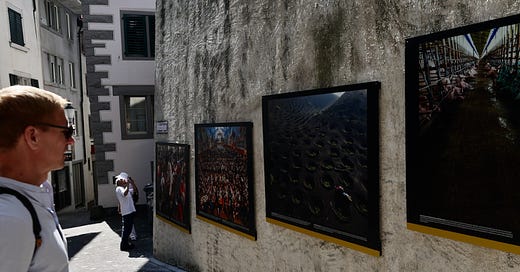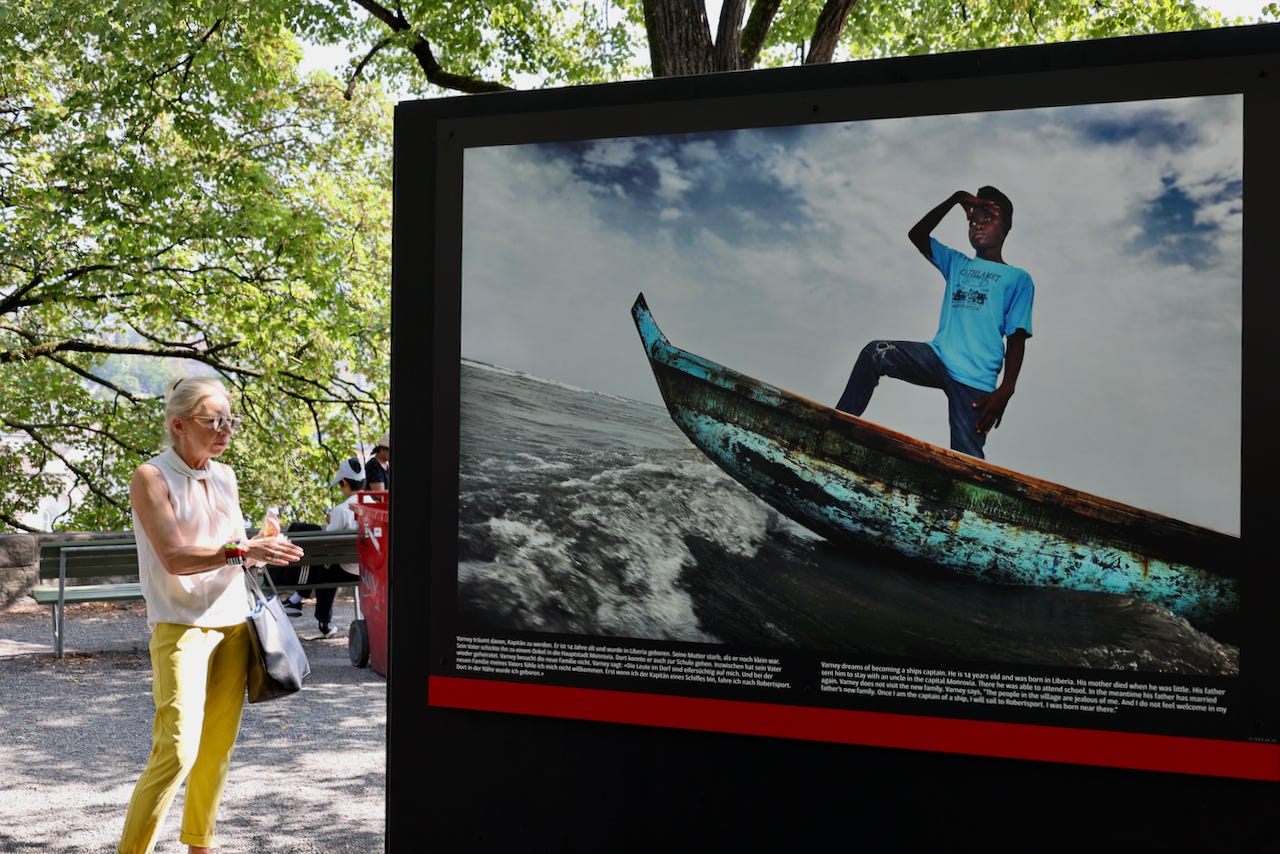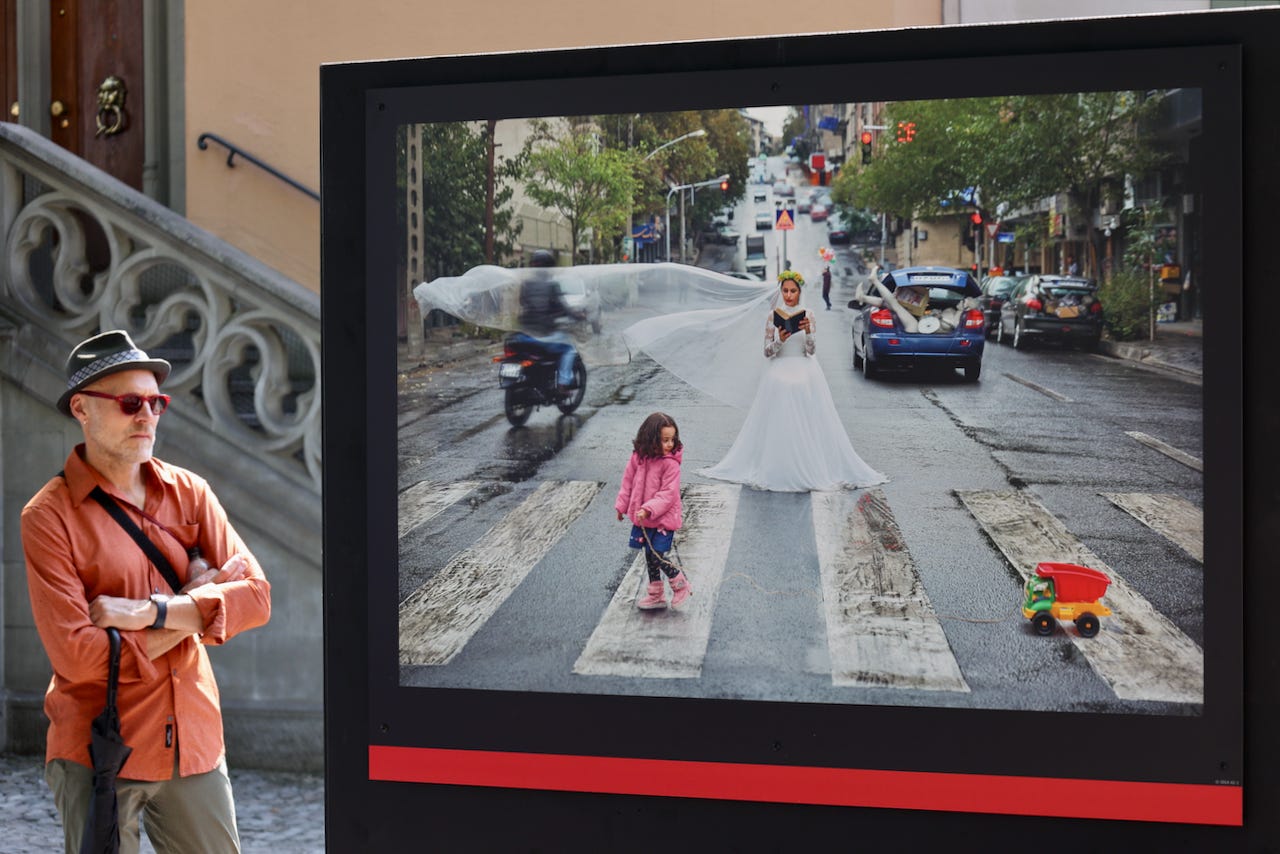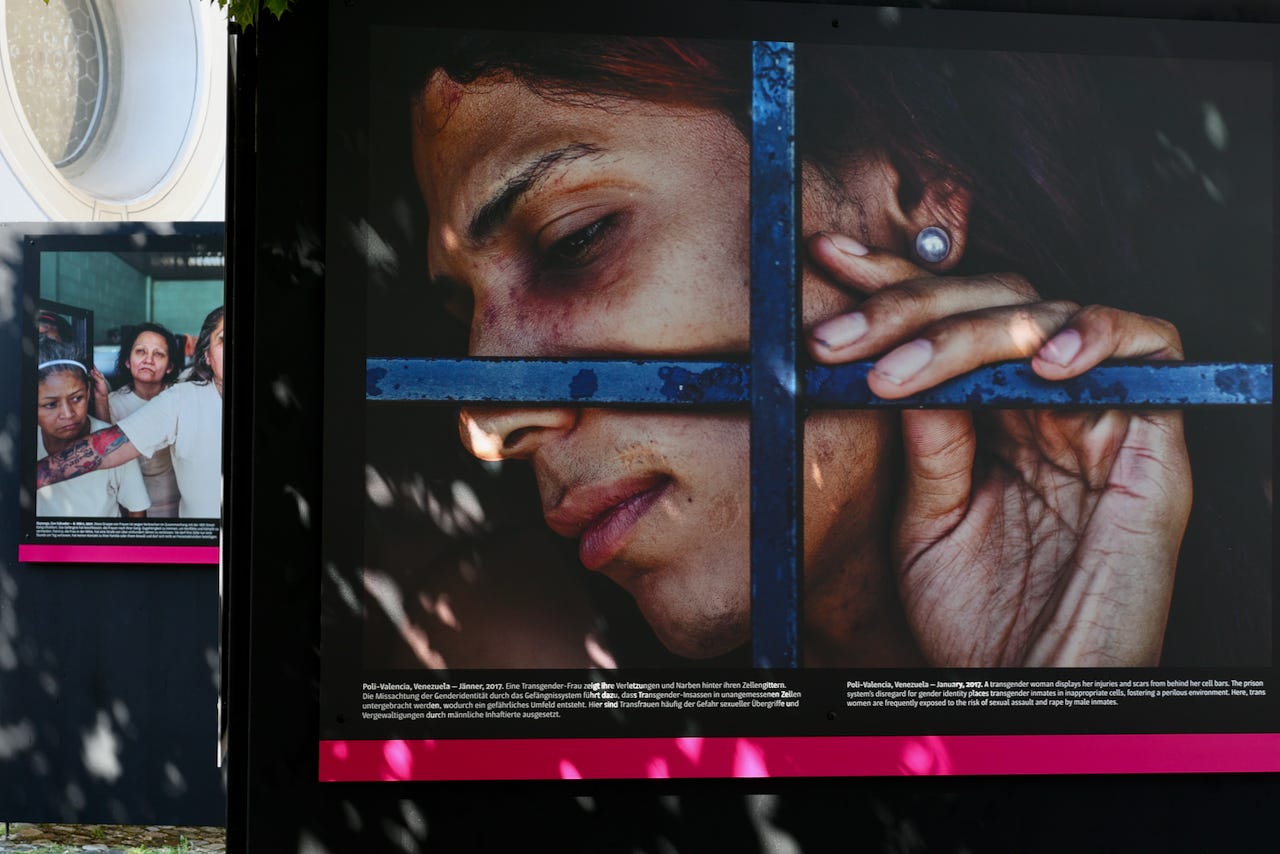WorldWise readers—
Words are undeniably powerful, whether spoken or written.
But you know what they say about pictures…
Let’s take this beyond the clichéd truths though, shall we.
It seems to me that the power of words is tied to both their capacity to pin down something nebulous—an idea, a thought, a feeling—and, on the other hand, the freedom of interpretation and imagination that they allow us when we receive them. When spoken, words are embodied—it takes the whole of us to infuse them with breath—and that has its own special power.
Still, I’ve often been frustrated by the need to be linear when we deal with words. One must come after the other; and so we must strive to express our world piece by piece, in sequences.
Images feel like a kind of liberation from that structure. Not without their own rules, imaginations and interpretations—but visuals can take us into other realities, whether real or constructed, in an instant.
Over the years of working with photography and film, my affection for that language has only grown. But there’s no favour of one language over the other. The point is to be open to different ways of expressing what needs to be expressed.
Anita
INSIDER | views & experience
“The city turns into a gallery”.
That’s the curatorial vision laid out in the opening lines of the festival catalogue.
Open Your Eyes, a festival that consists of open-air installations across Zurich, brings together “concerned photographers” and “concerned scientists” to show the challenge of meeting the UN's Sustainable Development Goals (SDGs)—a global framework for well-being and sustainability—alongside possible solutions.
The organisers make clear that this is not about illustrating the Goals with pictures. Each SDG is represented by the work of at least one photographer in the way of a ‘comment’ or an interpretation. This sits alongside text that presents related knowledge and potential research-based solutions, a contribution led by Claudia Zingerli-Glatt, ETH Zurich’s head of Sustainability.
The images are impressive. That’s no surprise given the caliber of the photographers involved—a mix of seasoned National Geographic contributors and a younger generation of artists making their mark in the space, in a selection curated by acclaimed photographer and publisher Lois Hammerhuber.
What I found just as interesting as the photographs is how they pushed me to expand how I think about many of the challenges they speak to.
Did I ever read ‘gender equality’ and think about the freedom to swim? Certainly not—until coming across Anna Boyiazis’ photographic series of women in Zanzibar daring to go against male-defined cultural norms to get a taste of that freedom.
In a similar vein, through the work of Chris de Bode and Maryam Firuzi, education becomes about children’s dreams for their future and about cultivating virtues such as tolerance and empathy.
In one installation, a series of images by Ana María Arévalo Gosen opens a rare window into the lives of incarcerated women in Venezuela and El Salvador, who are often remanded for months or years even though court orders should be delivered within 45 days. It’s not what the goal of ‘reducing inequalities’ normally brings to mind.
But that’s the power of being exposed to work that opens our minds to a fuzzier, more human side of topics that are usually framed with statistics.
There’s potential to build on this first event, both on the side of photography and science contributions. More imagery and perspectives from practitioners in/from countries of the Global South, which tend to be at the centre of the challenges the festival makes visible, would be welcome. And there is room for more focus on solutions at work.
But that’s for another day. Having set up this dialogue between photography and science for the global goals in such a public forum is a feat in itself. It may not make the SDGs a household name. At its best, a response would fulfil the organisers’ call to “stop. think. feel. act.” At the very least, each image is an invitation to reflect about the state of the world and the opportunities we have to build something better.
Open Your Eyes—a partnership between The Photo Society and ETH Zürich—runs from 8 September to 15 October in Zürich, Switzerland.
OPPORTUNITIES | working with the media
grants+funding
Tibetans who work in the visual arts and media, and environmental and women’s rights, can apply for support through The Rowell Fund for Tibet—closing October 2. [ASIA]
Mid-career journalists from and based in Sub-Saharan Africa are invited to apply for the FT Africa Journalism Fellowship—closing October 5. [AFRICA]
Young artists and writers from the Arab region can apply to the Production Awards programme for grants to produce their first creative projects—closing October 13. [MENA]
fellowships+scholarships
Journalists and researchers with an interest in data journalism can apply for a fellowship in Amsterdam—closing September 29. [GLOBAL]
Applications are open for the University of Central Lancashire’s (UCLan) Journalism Innovation and Leadership (JIL) postgraduate certificate course—closing September 30. [GLOBAL]
Early-career journalists interested in covering emerging technologies can apply for the one-year Tarbell Fellowship—closing October 1. [GLOBAL]
Journalism graduates interested in a master’s degree in television and digital journalism are invited to apply for The Kamal Adham Fellowship—closing October 26. [MENA]
training+events
Journalists from Kenya, Uganda, Tanzania, Rwanda and South Sudan can apply for training by the Internews’ Earth Journalism Network on how to use financial tools to investigate environmental crimes—closing September 25. [AFRICA]
One World Media is holding its Global Reporting Summit where filmmakers, podcasters and journalists can explore how to create more impact with stories—register for September 26-28. [GLOBAL]
Spanish-speaking journalists are invited to attend the event "How is Climate Journalism Progressing in Latin America and the Caribbean?"—register for September 27. [LAC]
The Guardian is offering an online workshop ($) on how to get started in podcasting—apply for October 4. [GLOBAL]
awards+competitions
The Nature Conservancy is inviting submissions for its 2023 Nature Photo Contest—closing September 29 [GLOBAL]
The Fetisov Journalism Awards are open for submissions—closing October 1. [GLOBAL]
The Sheikh Zayed Book Award is accepting submissions for its new edition—closing October 1. [MENA]
Filmmakers and activists can submit videos to the Social Media Impact Awards—closing October 7. [GLOBAL]
pitches+positions
Code for Africa is looking for a full-time trainer specialising in Media to join its Knowledge team—closing September 29. [AFRICA]
Climate Home is looking for pitches on the renewable energy supply chain—closing late October. [GLOBAL]
Newsweek is looking for a freelance China News Reporter—apply now. [ASIA]
Thomson Reuters is accepting pitches from selected African countries for LGBTQ+ stories—pitch now. [AFRICA]
resources+tools
Focus on the humans, not the robots: tips from the author of AP guidelines on how to cover AI - Reuters Institute for the Study of Journalism
What do readers want from numbers? Using data well without getting in the way of a good story - Press Gazette
Solutions Journalism: an introduction for journalists and newsrooms - EJC
Journalists and mental health: An API resource guide - American Press Institute
VIEW | insight & global news
ICYMI—in our latest VIEW post, we dive into developments around the growing popularity of the BRICS club of countries signalled by the decision to expand its membership, which was taken at the annual summit attended by leaders from Brazil, Russia, India, China and South Africa.








